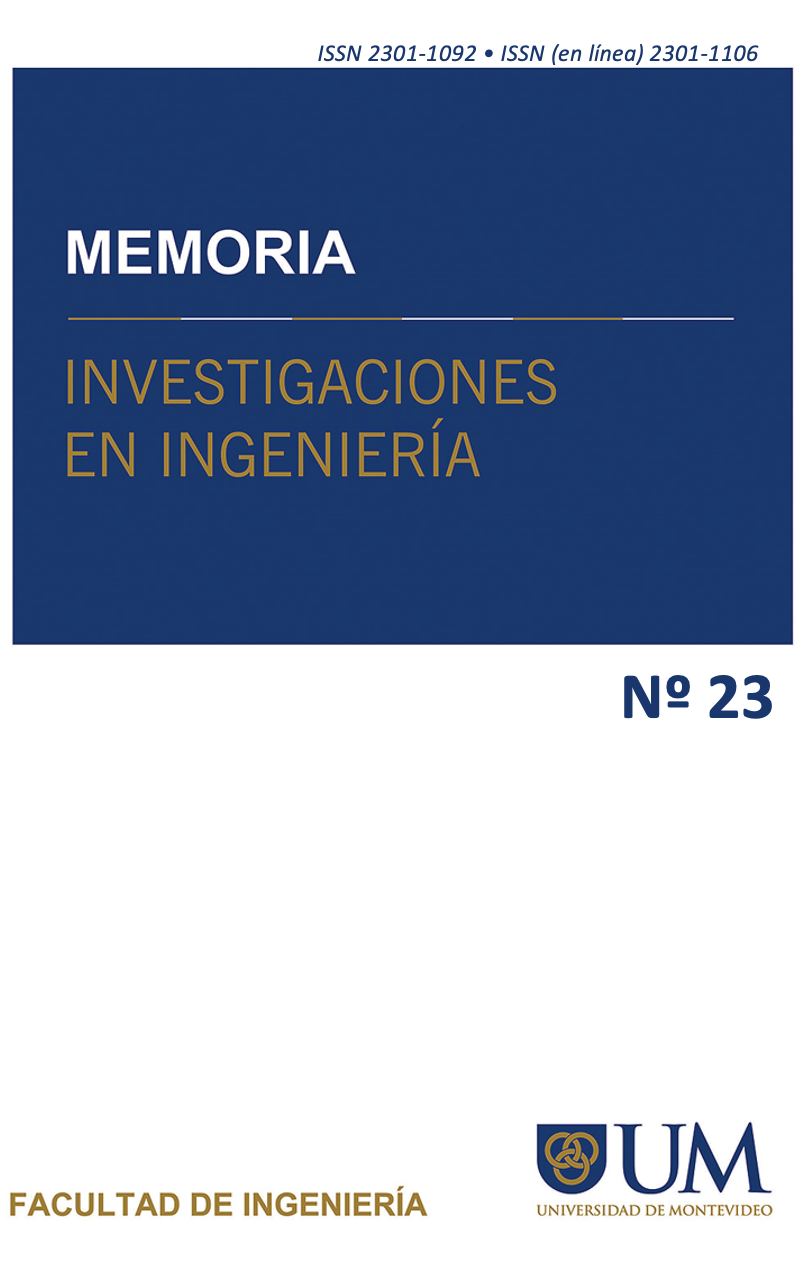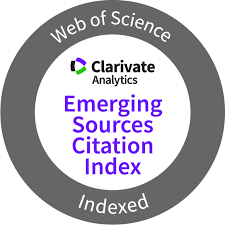Information consolidation architecture for health insurance using Big Data
DOI:
https://doi.org/10.36561/ING.23.3Keywords:
Big Data applications, Health and safety, Information architectureAbstract
The identification of data that is in various sources of information and its consolidation to deliver it as useful is achieved with Big Data. The overall objective of this work is to develop an information consolidation architecture design for health insurance using Big Data. For this research proposal, the analytical empirical method is used, of a quasi-experimental type with a quantitative approach, through the analysis of relevant references and specification of the architecture components. The results of this research allow categorizing different computational architectures for health insurance through a review of relevant literature, developing an architectural model of a computational system for an Ecuadorian health insurance company oriented to the consolidation of information, and evaluating the study methodology used to establish feasible factors of the model. The contribution of this work allows us to determine the applicability of the model to national or foreign health insurance companies by contrasting feasible factors in a specific company of the environment. It is concluded that the different sources of information or types of data used in the field of health insurance allow to know several edges of data analysis through a Big Data architecture, in addition to obtaining indicators to improve decision making; 73% of the established factors are viable in an Ecuadorian health insurance company.
Downloads
References
I. Olaronke and O. Oluwaseun, “Big data in healthcare,” in FTC, Dec. 2016, no. December, pp. 1152–1157, doi: 10.1109/FTC.2016.7821747.
G. Melendrez-Caicedo and J. Llerena-Izquierdo, “Secure Data Model for the Healthcare Industry in Ecuador Using Blockchain Technology,” Smart Innov. Syst. Technol., vol. 252, pp. 479–489, 2022, doi: 10.1007/978-981-16-4126-8_43.
A. Alim and D. Shukla, “A parameter estimation model of big data setup,” IDEA, 2020, doi: 10.1109/IDEA49133.2020.9170664.
A. de la Nube Toral Sarmiento et al., “4to. Congreso Internacional de Ciencia, Tecnología e Innovación para la Sociedad. Memoria académica,” 2018. .
S. Gupta and P. Tripathi, “An emerging trend of big data analytics with health insurance in India,” in ICICCS, Feb. 2016, no. Iciccs, pp. 64–69, doi: 10.1109/ICICCS.2016.7542360.
R. Ayala Carabajo and J. Llerena Izquierdo, “Tercer Congreso Internacional de Ciencia, Tecnología e Innovación para la Sociedad.” 2017, [Online]. Available: https://dspace.ups.edu.ec/handle/123456789/14450.
K. Umemoto and K. Goda, “A Prescription Trend Analysis using Medical Insurance Claim Big Data,” in ICDE, Apr. 2019, vol. 2019-April, pp. 1928–1939, doi: 10.1109/ICDE.2019.00209.
R. Ayala Carabajo and J. Llerena Izquierdo, “Segundo Congreso Salesiano de Ciencia, Tecnología e Innovación para la Sociedad.” 2016, [Online]. Available: https://dspace.ups.edu.ec/handle/123456789/12776.
J. Llerena-Izquierdo and M. Merino-Lazo, “Aplicación móvil de control nutricional para prevención de la anemia ferropénica en la mujer gestante,” Rev. InGenio, vol. 4, no. 1, pp. 17–26, 2021, doi: 10.18779/ingenio.v4i1.364.
W. M. Soto Eras, “Desarrollo del portal web de la fundación nuestra Señora del Cisne para la gestión de servicios en el Cantón Durán,” 2021. .
S. Kareem and R. Binti Ahmad, “Framework for the identification of fraudulent health insurance claims,” in ICBDA, Nov. 2017, vol. 2018-Janua, pp. 99–104, doi: 10.1109/ICBDAA.2017.8284114.
N. M. Morán Maldonado, “Estado de la Ciberseguridad en las Empresas del Sector Público del Ecuador: Una Revisión Sistemática,” 2021.
C. O. Sánchez Guzmán, “Modelo de red segura en un entorno distribuido para la transferencia de datos con mecanismos básicos de seguridad,” 2021. .
M. A. Laagu and A. Setyo Arifin, “Analysis the Issue of Increasing National Health Insurance Rates,” ICoSTA, 2020, doi: 10.1109/ICoSTA48221.2020.1570615599.
Y. J. Terán Terranova, “Seguridad en la Gestión de la información para las organizaciones públicas desde el enfoque ISO/IEC 2700: un Mapeo Sistemático,” 2021. .
D. Kim and K. P. Joshi, “A Semantically Rich Knowledge Graph,” in IEEE, May 2021, pp. 7–12, doi: 10.1109/BigDataSecurityHPSCIDS52275.2021.00013.
C. J. Guaigua Bucheli, “Algoritmos de seguridad para mitigar riesgos de datos en la nube: un mapeo sistemático,” 2021. .
J. G. Ponce Larreategui, “Indicadores de compromiso (IOC) para detección de amenazas en la seguridad informática con enfoque en el código malicioso,” 2021.
Superintendencia-de-Compañias-Valores-y-Seguros, “Companias de Medicina Prepagada Ecuador,” Listado, 2021. https://appscvsmovil.supercias.gob.ec/portaldeinformacion/cias_medicina_prepagada.zul (accessed Sep. 27, 2021).
M. J. Aguirre Sánchez, “Tecnologías de Seguridad en Bases de Datos: Revisión Sistemática,” 2021. .
G. Ecuatoriano, “Servicio Publico para pagos de accidentes de transito,” 2021. https://www.gob.ec/sppat/tramites/solicitud-pago-proteccion-gastos-medicos-victimas-accidentes-transito (accessed Sep. 27, 2021).
M. J. Chévez Morán, “Estudio de los patrones de seguridad para la atenuación de las irregularidades, las debilidades y amenazas en empresas de servicios de telecomunicaciones,” 2021. .
O. A. Escalante Quimis, “Prototipo de sistema de seguridad de base de datos en organizaciones públicas para mitigar ataques cibernéticos en Latinoamérica,” 2021. .
I. N. Coello Ochoa, “Análisis de ciberataques en organizaciones públicas del Ecuador y sus impactos administrativos,” 2021. .
C. A. Orozco Bonilla, “Estrategias algorítmicas orientadas a la ciberseguridad: Un mapeo sistemático,” 2021.
R. Tardio and A. Mate, “An iterative methodology for big data management,” in IEEE, Oct. 2015, pp. 545–550, doi: 10.1109/BigData.2015.7363798.
P. S. Muñoz Campuzano, “Modelos de seguridad para prevenir riesgos de ataques Informáticos: Una revisión sistemática,” 2021.
N. A. Vera Navas, “Modelo de seguridad informática para riesgos de robo de información por el uso de las redes sociales,” 2021.
J. N. Miranda Jiménez, “Mapeo sistemático de metodologías de Seguridad de la Información para el control de la gestión de riesgos informáticos,” 2021.
Y. Xie et al., “Predicting Days in Hospital Using Health Insurance Claims,” IEEE J. Biomed. Heal. Informatics, vol. 19, no. 4, pp. 1224–1233, Jul. 2015, doi: 10.1109/JBHI.2015.2402692.
W. Yang and W. Hu, “Research on Algorithm for Health Insurance Data Fraud Detection,” in IEEE, May 2021, pp. 57–62, doi: 10.1109/BigDataSecurityHPSCIDS52275.2021.00021.
U. Srinivasan and B. Arunasalam, “Leveraging Big Data Analytics to Reduce Healthcare Costs,” IT Prof., vol. 15, no. 6, pp. 21–28, Nov. 2013, doi: 10.1109/MITP.2013.55.
L. Jiang, “Quantitative Model of Insurance Risk Management System Based on Big Data,” in ICSCSE, Nov. 2016, pp. 590–593, doi: 10.1109/ICSCSE.2016.0159.
A. Sysoev and R. Scheglevatych, “Combined Approach to Detect Anomalies in Health Care Datasets,” in SUMMA, Nov. 2019, pp. 359–363, doi: 10.1109/SUMMA48161.2019.8947605.
S. Zahi and B. Achchab, “Clustering of the population benefiting from health insurance,” in ICSCA, Oct. 2019, pp. 1–6, doi: 10.1145/3368756.3369103.
Y. Katsis and N. Balac, “Big Data Techniques for Public Health,” in IEEE/ACM, Jul. 2017, pp. 222–231, doi: 10.1109/CHASE.2017.81.
S. Karim and E. Gide, “The Impact of Big Data on Health Care Services in Australia,” in ICMSTTL, 2019, pp. 34–38, doi: 10.1145/3348400.3348414.
Y.-K. Chen and Y.-H. Tao, “Analyzing the Healthcare Expenditure of National Health Insurance,” in ICAMCM, Dec. 2014, pp. 353–355, doi: 10.1145/2684103.2684178.
V. Chandola and S. R. Sukumar, “Knowledge discovery from massive healthcare claims data,” in ACM, Aug. 2013, vol. Part F1288, pp. 1312–1320, doi: 10.1145/2487575.2488205.
Y. Liu and J. Peng, “Big Data Platform Architecture,” BDET, pp. 31–35, 2018, doi: 10.1145/3297730.3297743.
M. Kumar and R. Ghani, “Data mining to predict and prevent errors in health insurance claims processing,” in ACM, 2010, p. 65, doi: 10.1145/1835804.1835816.
Y. Chen, K. She, and S. Zhao, “Social Insurance Contribution Rate Reduction and Firm Activity Evidence,” in ICSEIM, Jan. 2021, no. 24, pp. 113–117, doi: 10.1145/3451471.3451490.
X. Deng and D. Wu, “Senior health management through internet of things and real-time big data analytics,” in ACM, Sep. 2015, pp. 674–674, doi: 10.1145/2808719.2816981.
A. Sara and T. Yassine, “Secure confidential big data sharing in cloud computing,” in iCBDCA, Mar. 2017, vol. Part F1294, pp. 1–4, doi: 10.1145/3090354.3090388.
L. Kantner and S. D. Goold, “Web tool for health insurance design by small groups,” in CHI, Apr. 2006, pp. 141–146, doi: 10.1145/1125451.1125484.
Published
How to Cite
Issue
Section
License
Copyright (c) 2022 José Zerega-Prado, Joe Llerena-Izquierdo

This work is licensed under a Creative Commons Attribution 4.0 International License.






















